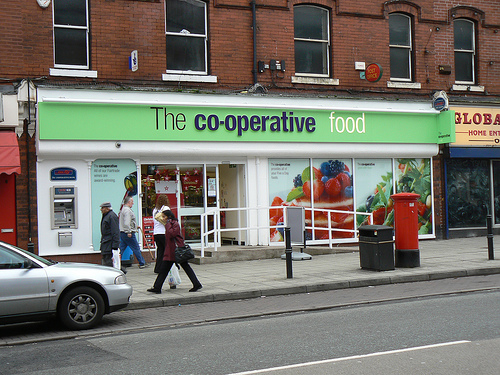“My idea of heaven is a great big baked potato and someone to share it with.” — Oprah Winfrey.
As much as I stress the importance of sharing in my family, my nine-year old daughter refuses to share her precious possessions with her five-year old brother. And she has a point. He’s young and exuberant, and chances are he’ll break her art supplies or laptop before the day is over. But when he gets older – and more careful and responsible – I hope that she will freely share most everything with him.
I am a big fan of sharing, and it’s not only because there’s something warm and fuzzy about it. Sharing saves time and money, and can even help you make money … especially in this economy, when people are more open to sharing all kinds of resources. Maybe that’s why, in the last few years, sharing and collaborative consumption have grabbed a foothold in the way people consume all over the world. Just look at the growth of sharing websites such as AirBnB, RelayRides, Rentalic, and others. There’s a greater sense of community, as well as a desire to reduce carbon emissions and make more efficient use of existing resources. What’s not to like?
This year, we’ve seen Mutual Aid in Motion.
From scaling sharing hubs to Mutual Aid 101 trainings, we’re helping communities build the tools they need.
Every dollar fuels lasting resilience – proving that when we move together, we all move forward.

The name says it all at Thd Co-operative Food on Northenden Road in Brooklands, England. Photo credit: John Walker. Used under Creative Commons license.
Recently, I joined an organic food co-op to, among other reasons, teach my children about the benefits of sharing and get them to eat more produce. Originally formed to access goods and/or services – such as electricity, insurance, and savings accounts (Remember credit unions?) – which were otherwise inaccessible, co-ops boomed in the 1700s, 1800s, and again in the 1900s. Some of the benefits co-ops have realized over the years include increased bargaining power, lower costs by purchasing in bulk, shared costs (on technology, promotions, location, and so on), access to new markets, reduced business risk, and many others. In the 21st century, all of those advantages, plus a smaller ecological footprint, a healthier way of living, and, I believe, teaching children about sharing can be added to that list.
Unfortunately, because of its early origins, the co-op model is often considered a rudimentary business model by those unfamiliar with the collaborative consumption movement. Many are surprised to learn that myriad new businesses today are co-ops. Recently, I came across one such business in The Washington Post. Good Life Wellness is located in Maryland. It’s a co-op where, according to one member, “Group members operate related businesses such as massage therapy, acupuncture, chiropractic, naturopathic, and life coaching. They hold workshops to educate each other about their respective skills. They also have monthly staff meetings and members refer clients to one another.” Originally a single business, others later joined in and together the business grew into a more robust venture.
I wish I would have thought about this concept a few years ago when I put much of my savings into starting an indoor playground. I had spent a year doing research and carefully devising my business plan. Indoor playgrounds were a thriving business. Those bouncing castles and three houses were so popular – even my kids couldn’t get enough of them. But my timing was awful; We opened for business right before the economy tanked. Unemployment rose so quickly that, almost overnight, our business became a luxury item and our customer base dried up. To save money, parents were now forced to take their kids to the park and hold their birthday parties from home. I was forced to shut down.

Worker cooperatives can be implemented in just about any industry. Photo credit: Todd Dwyer. Used under Creative Commons license.
Perhaps switching to a co-op model might have increased the chance of my business surviving. By sharing space, I could have housed other types of complementary businesses, such as a pizzeria, an upscale children’s consignment shop, and a children’s hair salon. Like Good Life Wellness, each of these businesses working cooperatively may have stood a far better chance of survival than working alone. However, at that time, the idea of sharing had not yet caught on, and collaborative business models were not as widely known as they are now. Trying to convince people to form a co-op model might have been difficult. The truth is, I will never know.
What I do know is that, today, new technologies and social media are helping individuals and businesses connect like never before. Co-op opportunities are ripe as the economy and unemployment continue to lag, and banks refuse to lend to small businesses. Perhaps because they have limited options, individuals and businesses are forming co-ops to share some of the benefits that large organizations routinely obtain. Whether individuals share in a venture to increase their chances of success (by sharing costs and resources) or to personally benefit from the collaboration (organic produce sharing, childcare sharing), today’s co-ops are viable solutions to the economic problems we face, or simply because is nice to share. Even my daughter is getting on the bandwagon, and is now sharing her art supplies with her little brother in exchange for some of his animal crackers.
Sources of information:

